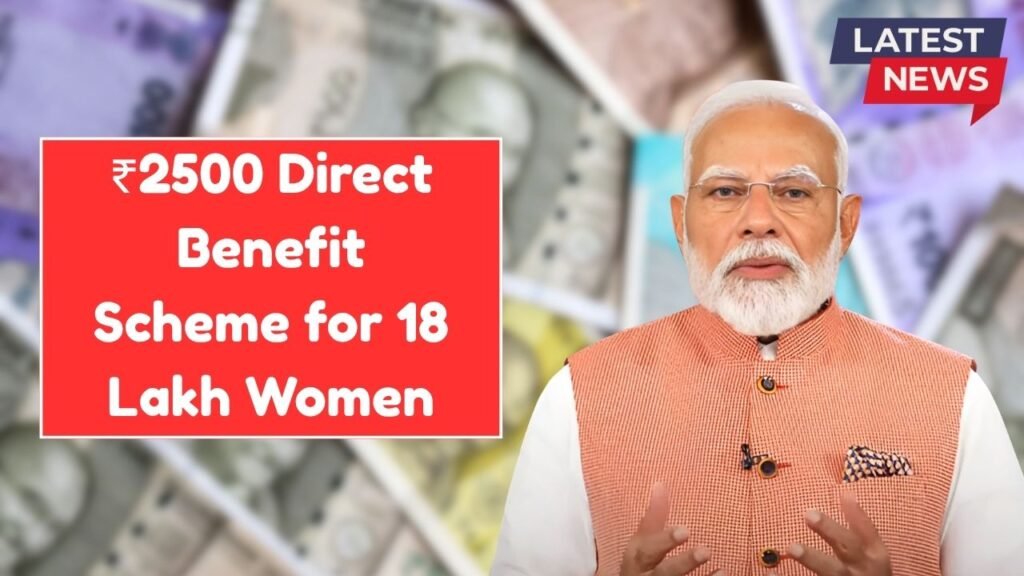A new step in women’s welfare has been announced with a direct benefit transfer scheme that gives ₹2,500 every month to 18 lakh women. This scheme is built on the idea of giving money directly to women so they can make their own decisions. In a country where financial independence for women is still a challenge, this move can change lives in many ways.
The goal is simple. Put money in women’s hands and give them power to manage their own needs and their families.
Scheme Overview
This scheme is very clear and easy to understand. Every woman who qualifies will get ₹2,500 every month in her bank account through Direct Benefit Transfer. There are no middlemen, so no delay or corruption. Around 18 lakh women will get this help, which shows the big scale and strong commitment behind it.
Eligibility Criteria
Full rules are still awaited, but some conditions are expected. Usually, such schemes target women from poor families with limited income. Beneficiaries must be permanent residents of the state and between 18 to 60 years old. Women already getting other big government benefits, paying tax, or working in government jobs may not qualify. The focus is on those who need it most.
Targeted Impact
For many women, ₹2,500 a month means real relief. It can pay for food, medicines, or school fees. It can stop families from taking loans and even help women start small work or businesses. Most importantly, the money will come directly into their account, making them stronger in family decisions.
Broader Benefits
When women have money, small shops and local markets also grow. This money goes back into the community, creating more jobs and more activity in the economy. Such schemes also reduce inequality and improve life for poor families. In the long run, it helps build stronger communities and supports women’s role in the economy.
Governance Concerns
Good schemes also face challenges. The first is making sure only eligible women get the benefit. This needs clean data and proper checks. Another issue is access to bank accounts, as some women in rural areas still struggle with digital banking. Timely payments, transparent systems, and easy complaint support will be important for success.
Avoiding Pitfalls
Some people worry that free cash may reduce work interest. But studies from other countries show this is not always true. Still, there should be plans to help women move from dependence to independence with jobs and education. Proper monitoring will make sure the money is used for useful needs without controlling women’s choices.
Learning From Others
Other states like Delhi have run similar programs. Results show success depends on good planning, strong digital systems, and proper awareness campaigns. Technology helps, but local support systems are equally important to guide women and make the scheme effective.
Operational Readiness
To make this scheme work, many things must be ready. The process to apply should be simple and open both online and offline. Women must be clearly informed about how to apply and what papers are needed. Payments should be on time with checks against fraud. A feedback system will also help improve the program as it runs.
Community Involvement
Local groups can make a big difference. Self-help groups, panchayats, and women’s collectives can spread awareness and guide women during registration. They already have trust in communities, so they can help ensure fairness and transparency. When women support other women, the results become stronger and long-lasting.
Long-Term Vision
The ₹2,500 support is a strong start, but not the end. Real empowerment needs more—education, health, safety, equal rights, and jobs. If this scheme is combined with training, healthcare, and business support, its power will grow even bigger. It can truly change lives for the better.
Conclusion
The ₹2,500 monthly benefit for 18 lakh women is a strong step toward women’s empowerment. It shows that women’s financial freedom is not just social progress but also good for the economy. Success will depend on clear, fair, and transparent implementation. If managed well, this scheme can set a new path for future policies that treat women as equal partners in growth.
Disclaimer: This article is for general information only. It is not legal or financial advice. For complete details, eligibility, and application process, please check official government announcements or contact authorized offices.
FAQs
Who will get the benefit?
Women from poor families who qualify.
How much money will they get?
₹2,500 every month.
How will they get the money?
Directly in their bank accounts.
Is there an age limit?
Yes, usually between 18 and 60 years.
Can government employees apply?
Most likely, no.
